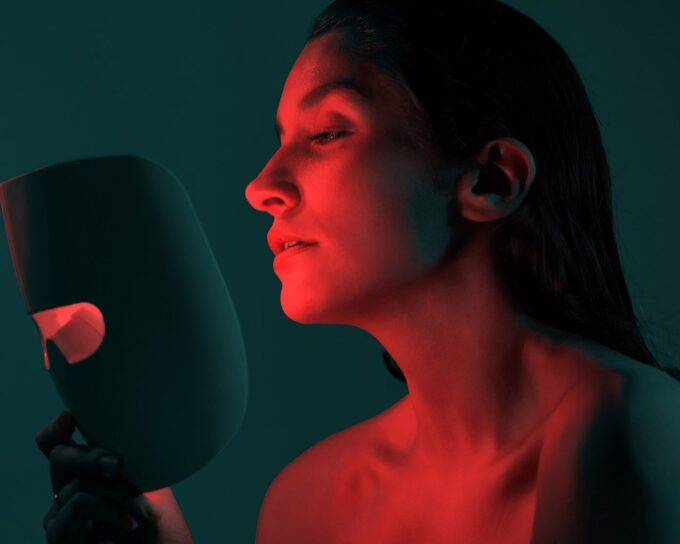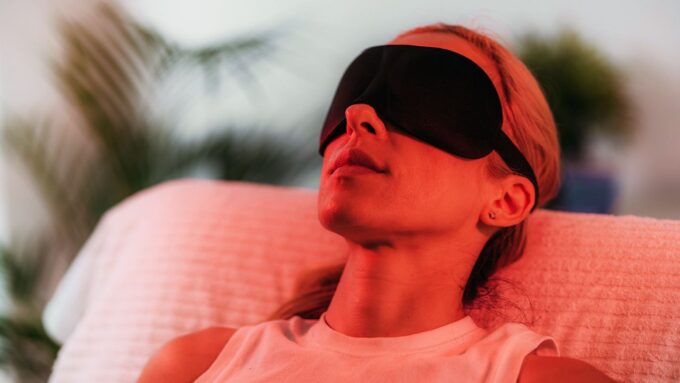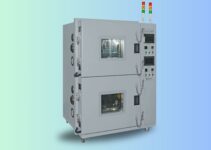Not long ago, the term ‘red light therapy’ (RLT) was obscure, only heard within specialized medical and scientific circles. Fast forward to today, and it has become a buzzword within the wellness industry. The increased interest in this innovative therapy begs the question: What exactly is red light therapy?
Light has been used historically for medicinal reasons from the dawn of civilization. For instance, the Greeks and Egyptians both used ‘heliotherapy,’ a technique for harnessing solar light for medicinal advantages, to promote recovery. Growing plants in space was the goal of NASA’s research in the 1990s, which is where our current knowledge of RLT started. These tests unintentionally revealed that some light wavelengths can promote the development of human cells and tissues.
Principles of Red Light Therapy

Source: byrdie.com
Understanding the light spectrum is crucial for understanding how RLT functions. The wavelength of visible light (VL) is 400–700 nanometers (nm). Wavelengths in the “red” (630-660 nm) and “near-infrared” (800-880 nm) ranges are used by the most efficient RLT. It’s interesting to note that these wavelengths may enter the skin and tissues of people and cause a variety of biological reactions.
Let’s now explore the interactions at the cellular level. Our cells’ mitochondria, sometimes known as the “powerhouse of the cell,” are the key participant in this process. Mitochondria absorb red and near-infrared light, which encourages the synthesis of energy-dense molecules like adenosine triphosphate (ATP). Increased ATP synthesis improves cellular processes, encourages repair and renewal, and lowers inflammation.
The main difference between various RLT kinds is the wavelengths that they produce. Red light therapy wands, for example, may also employ near-infrared wavelengths, which are helpful for deeper tissue repair. Red light therapy for the face often uses wavelengths in the 630-660 nm range, assisting with collagen formation and skin health.
Therapeutic Applications of Red Light Therapy
RLT has several uses, but one of the most well-known is for skin health. The red light’s 630–660 nm wavelengths encourage the synthesis of collagen, a protein necessary for preserving skin suppleness and minimizing wrinkles. So, employing red light treatment at home may be an effective way to keep your skin looking young and healthy overall.
Red light treatment shows promising outcomes in managing pain in addition to skin health. RLT’s energy-boosting actions on cells can lower inflammation and improve blood flow, both of which lessen discomfort. RLT offers a wide range of uses, from muscular discomfort following an exercise session to joint pain in arthritic patients.
The best home red light therapy devices have the potential to aid in recovery and healing, visit SolaWave to discover them. Whether it’s accelerating wound healing or helping athletes recover faster from strenuous workouts, the restorative effects of RLT are gaining recognition in both medical and sports fields.
Debunking Myths about Red Light Therapy

Source: forbes.com
Like any emerging area, there are many myths regarding RLT. One of these lies is the idea that RLT’s benefits are only a placebo. However, multiple scientific investigations support the biochemical alterations brought about by RLT, supporting its therapeutic potential. That all light treatments are the same is another prevalent misconception. It’s important to keep in mind that therapeutic benefits depend on wavelength, thus not all light treatments will have the same impact.
Current research in RLT is robust, with numerous studies demonstrating its efficacy in different applications. However, like any scientific endeavor, it’s a continually evolving field, and research is ongoing to determine the optimal wavelengths, durations, and intensities for various therapeutic applications.
Guide to Using Red Light Therapy at Home
When it comes to selecting a red light therapy device for home use, the sheer number of options available can be overwhelming. To ensure you make the right choice, it’s important to consider several key factors.
First, take attention to the device’s wavelength output. Selecting a device that gives the right wavelengths for your particular requirements is essential since different wavelengths have different effects on the body. Take into account the device’s intensity as well. Finding a gadget with programmable intensity settings might be helpful because the strength of the light emitted can affect how well the therapy works.
The treatment area’s size is another crucial factor. While some devices can cover greater sections of the body, others are intended to target smaller areas. Consider your needs and the treatment region you want to concentrate on, then choose a device that fits that need. Lastly, be sure the equipment complies with safety requirements and has gone through the necessary testing and certification.
To effectively use red light therapy at home, it’s essential to understand the appropriate treatment duration, frequency, and intensity. These factors can vary depending on your health status and treatment goals. As a general guideline, start with shorter sessions of about 10-15 minutes and gradually increase the duration if needed. It’s important to listen to your body and adjust the parameters accordingly to achieve the desired results while avoiding overexposure.
Consulting with a healthcare professional or following the manufacturer’s guidelines can provide further insights into optimizing your at-home red light therapy sessions.
Future of Red Light Therapy

Source: everydayhealth.com
RLT research is developing quickly, and novel therapeutic uses are always being investigated. RLT may provide advantages for maintaining good brain and ocular health as well as reducing the consequences of neurodegenerative illnesses, according to recent studies.
Future research outcomes will likely influence how RLT is used and applied. As our understanding of RLT deepens, there may be new guidelines for optimizing treatment protocols and possibly even novel applications of this promising technology.
RLT essentially promotes cellular energy generation, which improves a variety of cellular activities. While research is still in progress, many other areas may have unrealized potential for its use, in addition to its current focus on skin health, pain treatment, and recuperation.
Understanding the science and possibilities of RLT is crucial whether you’re a holistic health professional contemplating a red light therapy wand for your clinic or a wellness enthusiast fascinated by the promise of RLT for face rejuvenation. One thing is certain: RLT is shedding light on a potential route in the world of therapeutic technologies as we continue to unravel the secrets of light’s interaction with our bodies.







